Flowering plants that lack vascular tissues in the phylum Bryophyta and moss inhabit every continent on Earth and represent about 12,000 species. They grow in a rich diversity of environments, from tropical forests to exposed rock surfaces in Antarctica.
Across the world, a range of animals include moss in their diets. Because moss typically comprises about 80% fiber, most animals don’t consume this plant in large amounts as it’s not easily digestible. However, In cold environments, a number of herbivores are adapted to eat moss, especially in winter when vegetation diversity is low.
In this guide, we’ll cover five animals that eat moss.
Read to learn more!
1. Barnacle Goose (Branta leucopsis)
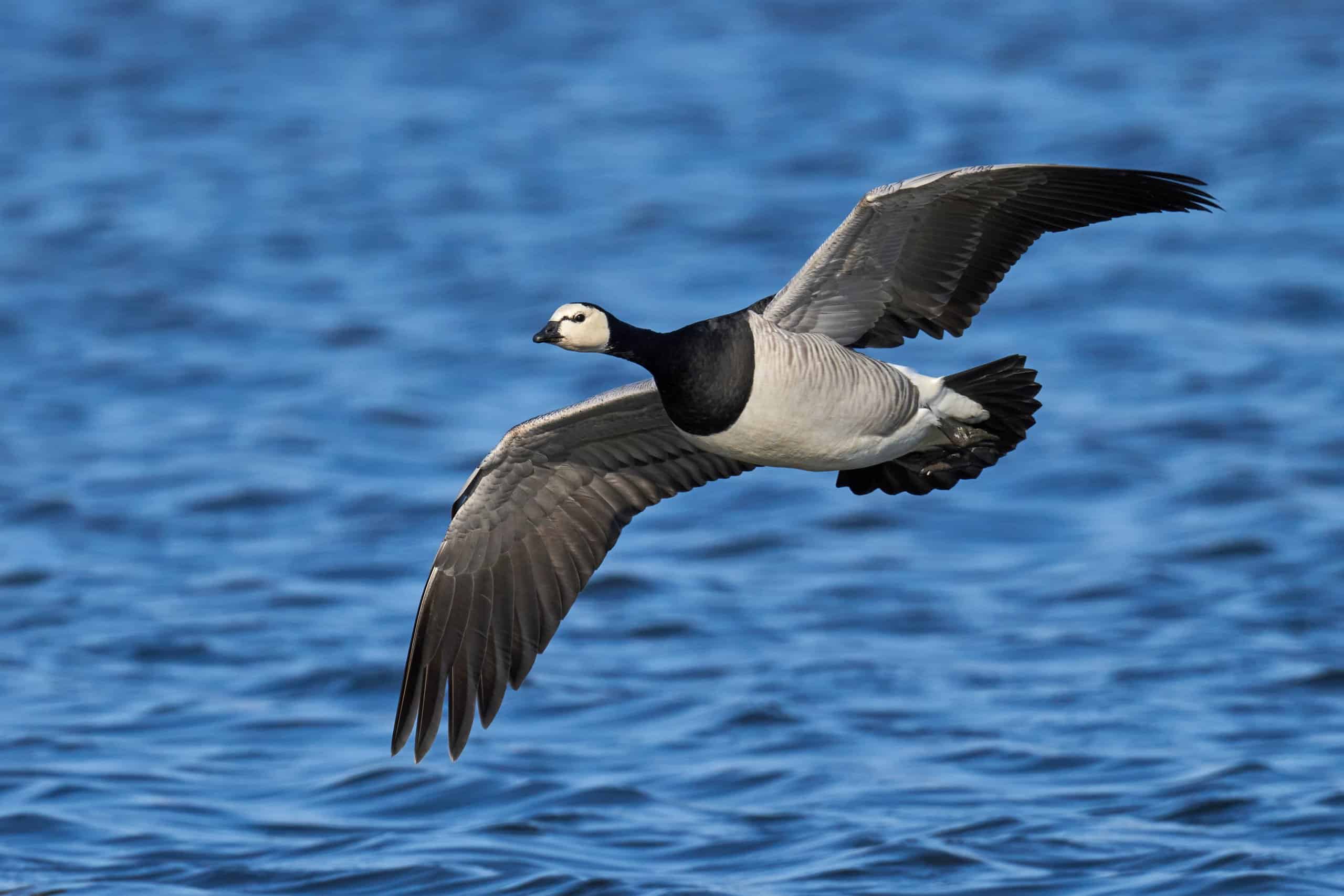
During the winter, some populations of
barnacle
geese will feed heavily on mosses.
©Dennis Jacobsen/Shutterstock.com
Nesting on Arctic coasts from northeastern Greenland to Siberia and wintering in northern Europe, the cold-loving barnacle goose (Branta leucopsis) feeds on a range of hardy vegetation.
In the winter months especially, the barnacle goose consumes primarily grasses and mosses. The amount of moss they consume depends on the availability of other food sources in their environment. In the Norwegian archipelago of Svalbard, for example, moss makes up a significant portion of the barnacle goose’s winter diet.
2. Animals That Eat Moss: American Pika (Ochotona princeps)
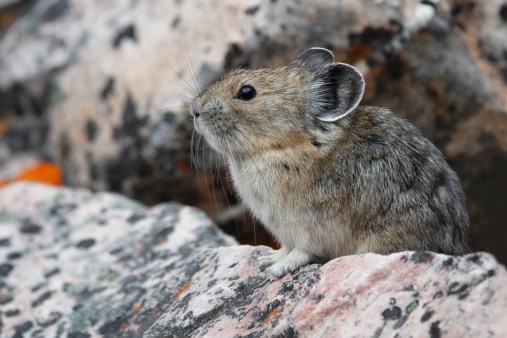
Some populations of low-elevation American pikas survive by foraging on shaded moss.
©BrianLasenby/iStock via Getty Images
While moss typically comprises a small portion of an animal’s diet, low-elevation dwelling American pikas (Ochotona princeps) survive climates that are typically too warm for them by feeding primarily on moss.
These animals have adapted to live at elevations between 8,000-13,000 feet in areas that rarely rise above freezing and may die from overheating when temperatures rise above 75 degrees Fahrenheit. With the Earth’s warming climate, American pika are increasingly driven to higher elevations. However, in 2013, scientists discovered that a population of American pika was surviving on shady, rocky slopes at the base of mountains in Oregon with a diet of 60% moss.
In Oregon’s Columbia River Gorge, researchers found that by primarily consuming moss that grows in shady areas of their habitat, the low-elevation pika can remain in the shaded, cooler microclimate in their habitat while foraging. After ingesting the high-fiber moss, they practice coprophagia by eating their feces to access additional nutrients.
A 2017 study researching the gut microbial communities of American pikas found that their gut microbiomes appear to be adapting to this high moss diet. Researchers found that pikas feeding on high amounts of moss contained microbial communities with notably large populations of Melainabacteria, a phylum of bacteria proposed to ferment fiber in the gut of herbivores.
3. Reindeer (Rangifer tarandus)
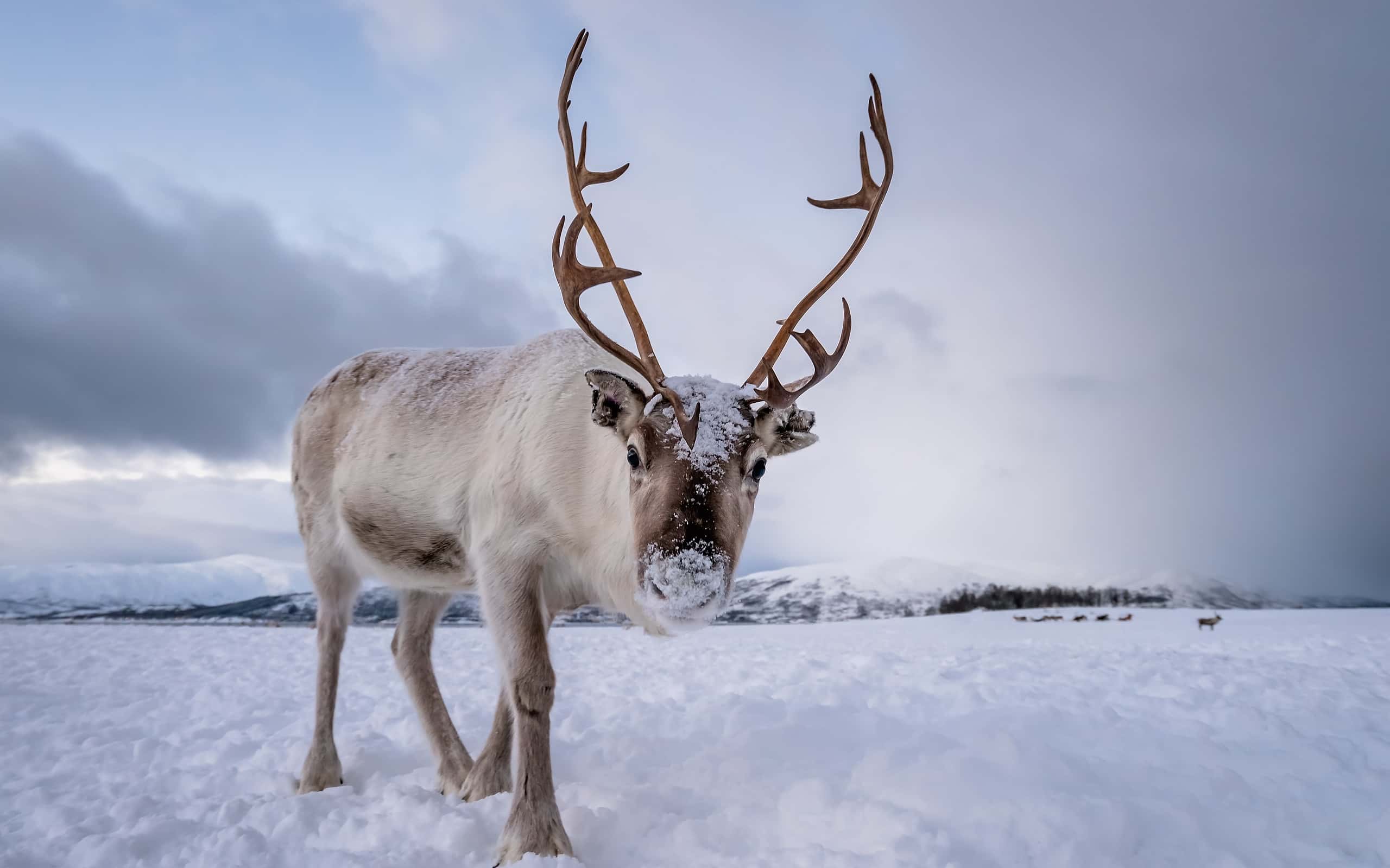
Reindeer
consume a range of vegetation in their cold climate, including moss.
©pawopa3336/iStock via Getty Images
Living throughout the Arctic tundra and subarctic taiga forests, reindeer (Rangifer tarandus) have adapted to eat the limited vegetation available in the harsh winter, including cold-hardy moss.
While reindeer do eat moss, it’s important to note that the so-called reindeer moss (Cladonia rangiferina) they preferentially consume is a lichen. However, researchers have found that in low-lichen regions or areas where reindeer have overgrazed lichen, they will readily consume a range of true moss species. This is particularly true in the winter when less diversity of vegetation is available. In the winter, the diet of Svalbard reindeer may consist of up to about 55% moss.
4. Animals That Eat Moss: Muskox (Ovibos moschatus)
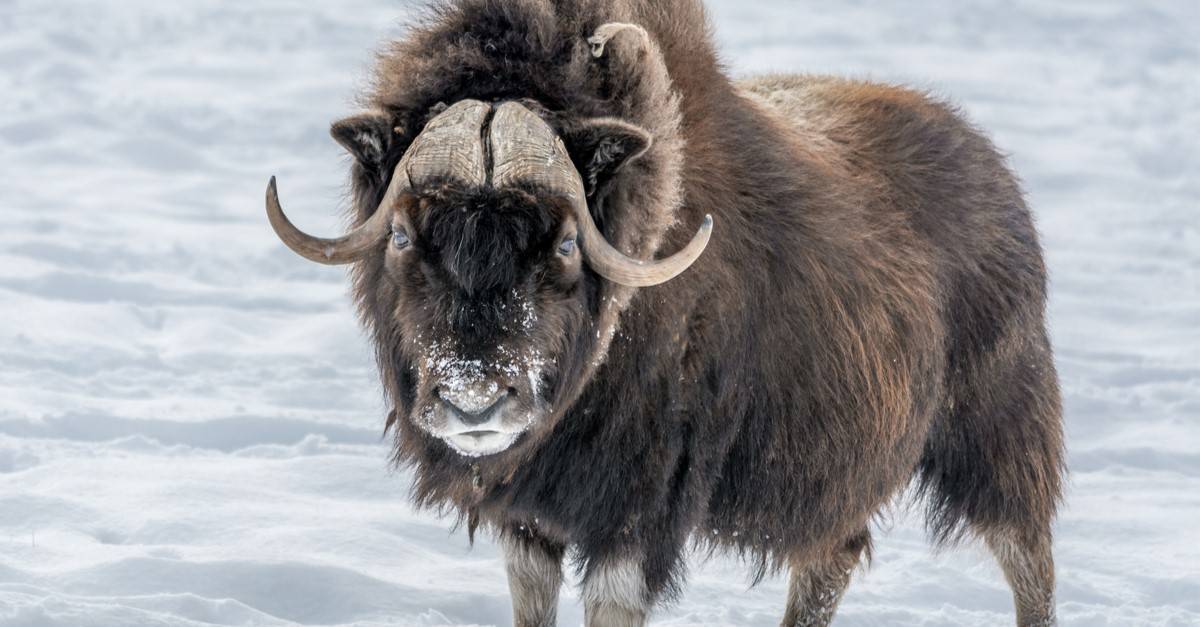
Muskoxen consume moss primarily in the winter and especially in area with low-lichen density.
©Fitawoman/Shutterstock.com
Muskoxen (Ovibos moschatus) are wild, stocky, long-haired bovids that inhabit the Canadian Arctic, Norway, Alaska, and Siberia. These hardy herbivores eat a range of vegetation including grasses, sedges, woody plants, lichen, and moss.
Muskoxen consume moss most frequently in the winter months. This increased consumption of moss is also typically associated with low-lichen regions and increases in latitude. In Alaska, however, muskox populations appear to feed on moss consistently throughout the winter regardless of latitude.
5. Lemmings (Arvicolinae)
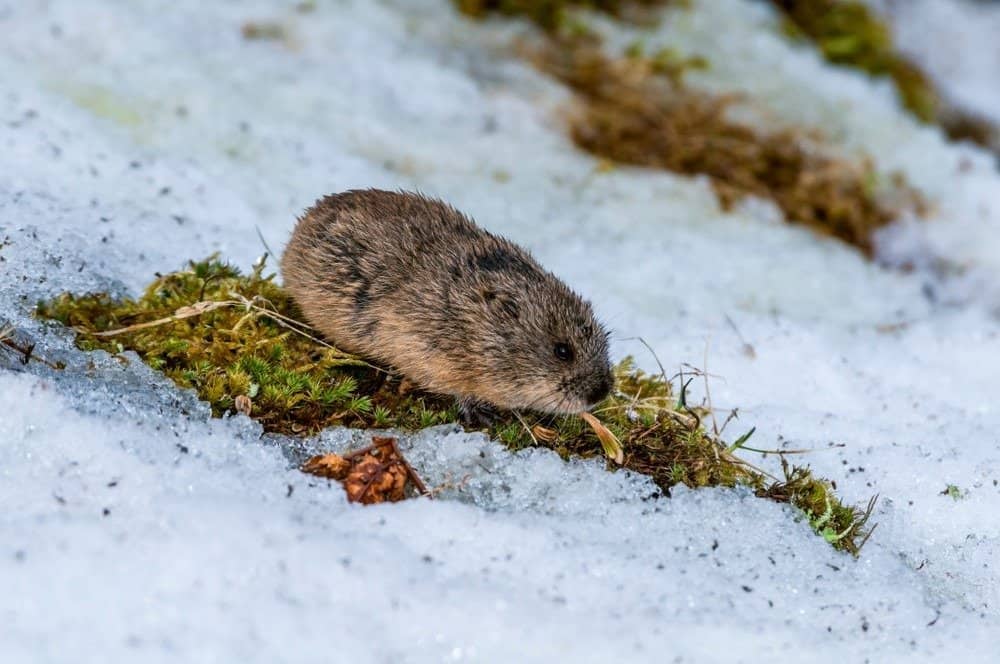
Species of lemmings that inhabit arctic and subarctic regions commonly consume moss.
©Nick Pecker/Shutterstock.com
About 20 species of lemmings belong to the Arvicolinae subfamily and live throughout temperate and polar regions of North America and Eurasia. Species of lemmings inhabiting arctic and subarctic regions are especially prone to consuming moss.
The wood lemming (Myopus schisticolor) lives in the tundra and arboreal forest regions of Eurasia. They eat a range of mosses but avoid species in the Sphagnum genus. In one study from eastern Finland, researchers found that wood lemming tended to focus winter foraging on moss species in the following genera: Pelurozium, Hylocomium, Polytrichum, Dicranum, Aulacomnium, and Ptilium.
The Canadian lemming lives in tundra regions of northern Canada and southern Alaska. In the winter, moss can make up about 40% of this small, thick-furred rodent’s diet.
The photo featured at the top of this post is © Anaredif/Shutterstock.com
Thank you for reading! Have some feedback for us? Contact the AZ Animals editorial team.







